QUESTIONS
1 Histologic examination of a corneal button received from penetrating keratoplasty is seen (Fig. 7-1). What is the most likely surgery to cause the finding shown?

A) Photorefractive keratectomy (PRK)
B) Radial keratotomy (RK)
C) Anterior lamellar keratoplasty (ALK)
D) Laser in situ keratomileusis (LASIK)
2 Which statement about rhabdomyosarcoma of the orbit is incorrect?
A) It is the most common primary malignant orbital tumor in children.
B) The alveolar type has the poorest prognosis.
C) It originates from the extraocular muscles.
D) Patients present usually with very rapid onset of unilateral proptosis that can simulate an orbital inflammation.
3 Gram stain of the purulent material from a dilated, erythematous punctum is shown (Fig. 7-2). Which of the following corresponds to the organisms shown?
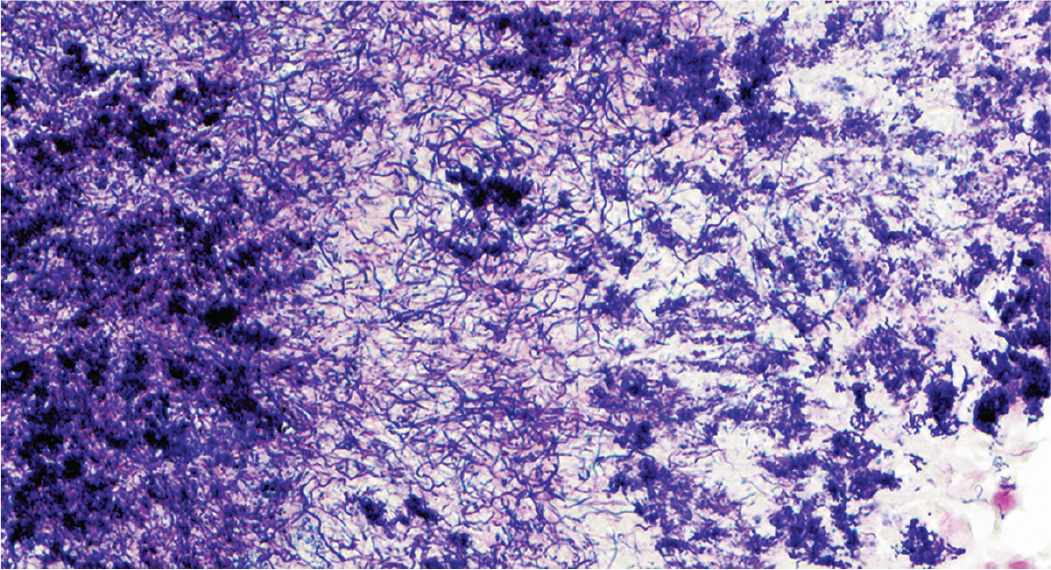
A) Gram-negative rods
B) Gram-negative filaments
C) Gram-positive cocci
D) Gram-positive hyphae
4 Examination of an eye enucleated for malignant melanoma of the choroid shows a glistening white irregular tumor arising from a ciliary crest measuring 3 mm × 2 mm × 2 mm. A histologic section is shown (Fig. 7-3). Which statement is true?
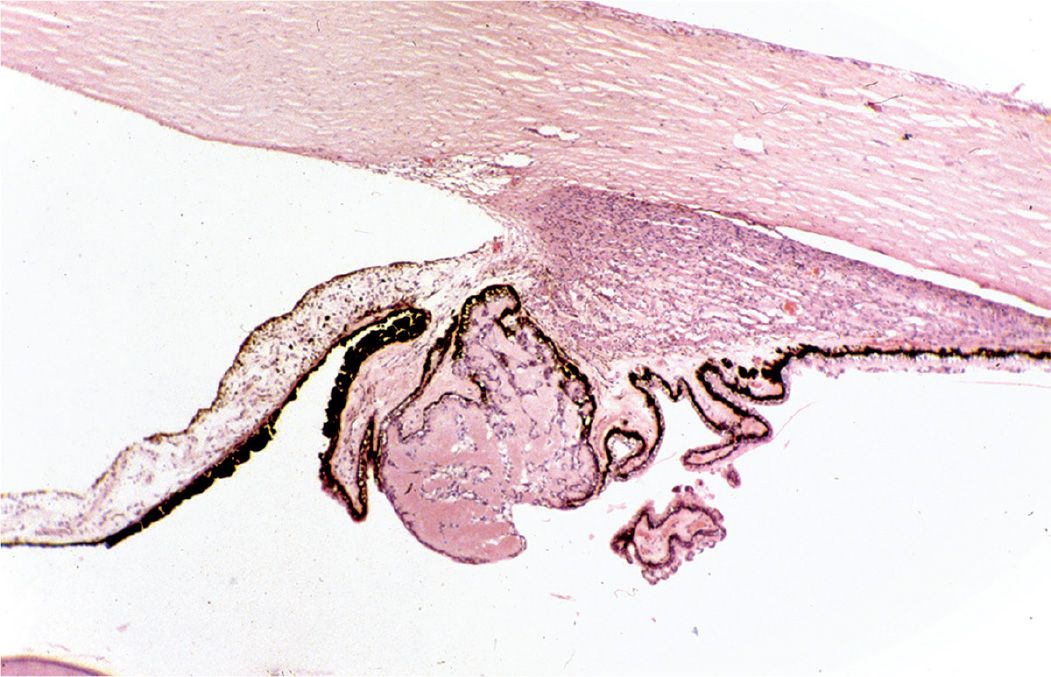
A) This is an intraocular metastatic lesion from the uveal melanoma.
B) This is a rare tumor of the nonpigmented epithelium of the ciliary body.
C) This lesion can be found in approximately 25% of older patients.
D) This lesion leads to secondary angle closure if untreated.
QUESTIONS 5 and 6 (FIGS. 7-4 to 7-9) A 42-year-old patient presents with a progressive decrease of visual acuity over 2 months in his right eye. Ophthalmologic examination (Fig. 7-4) shows an orange lesion temporal to the macula with associated retinal detachment in the inferior two quadrants. Fluorescein angiography (Fig. 7-5) displays a hyperfluorescent lesion with a hypofluorescent circular ring around the peripheral border of the lesion. Ultrasonography is shown (Fig. 7-6). The patient was lost to follow-up, but returned 2 months later with a blind, painful eye, and the eye was enucleated. Histologic examination is shown (Fig. 7-7). Higher-magnification images (Figs. 7-8 and 7-9) show the area temporal to the macula, that is, the area of the clinically visible lesion.
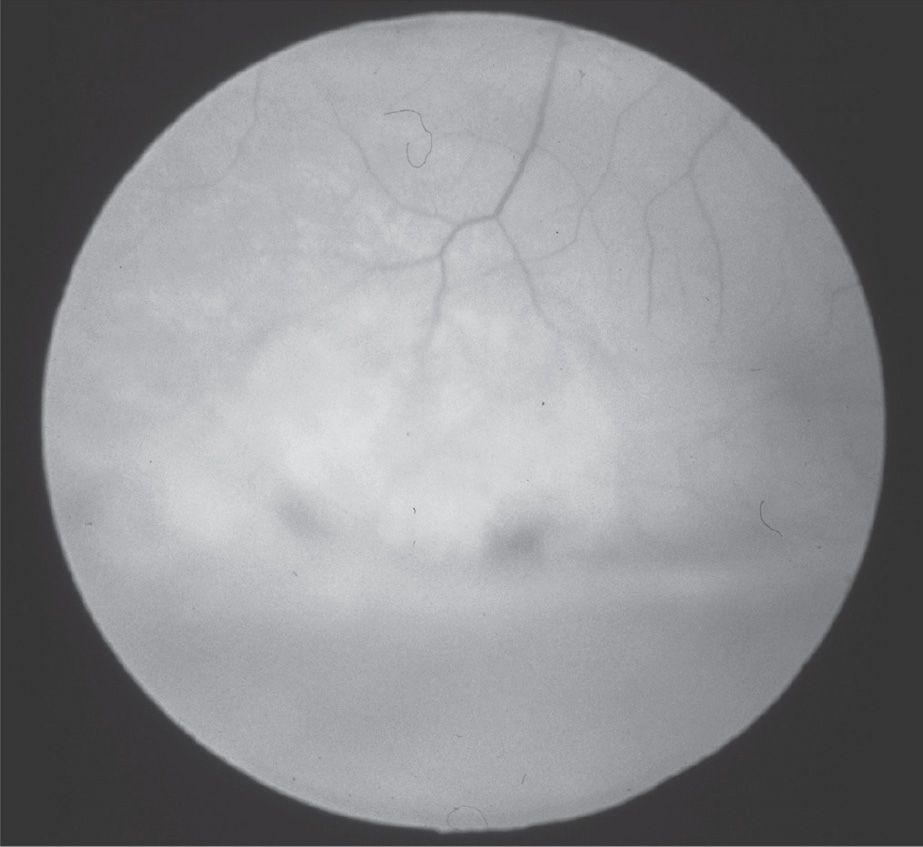
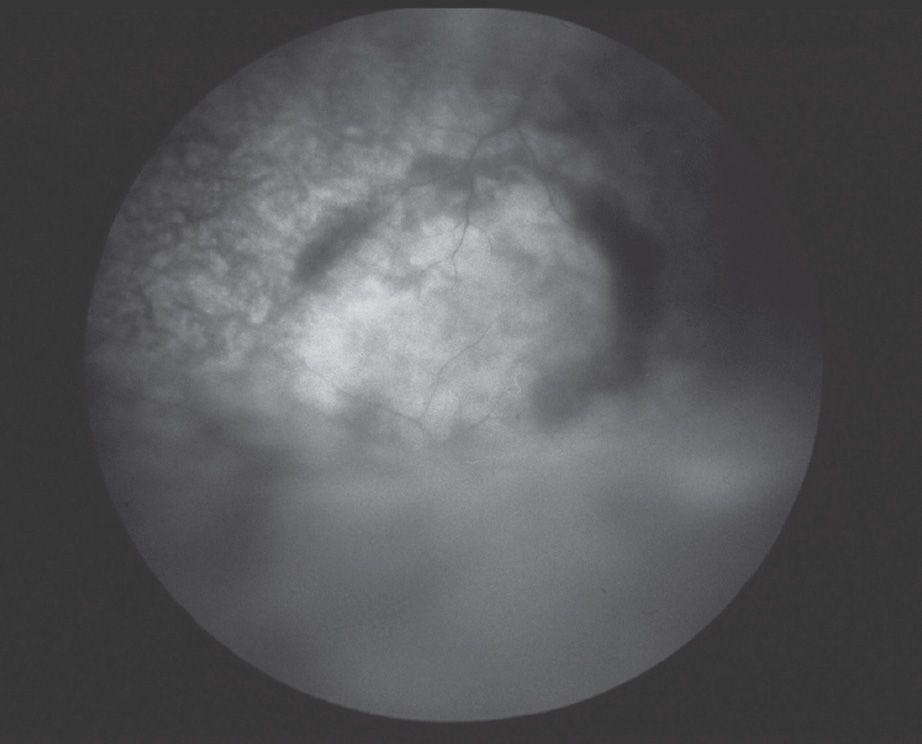

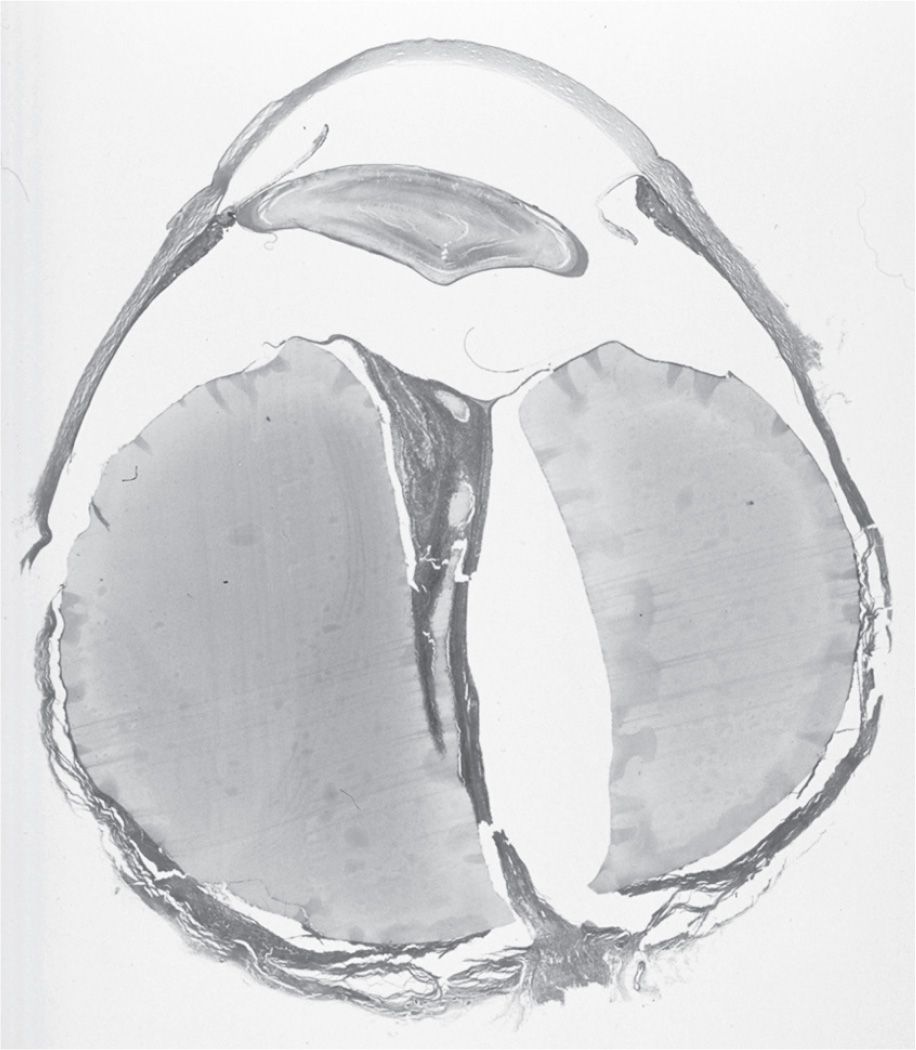
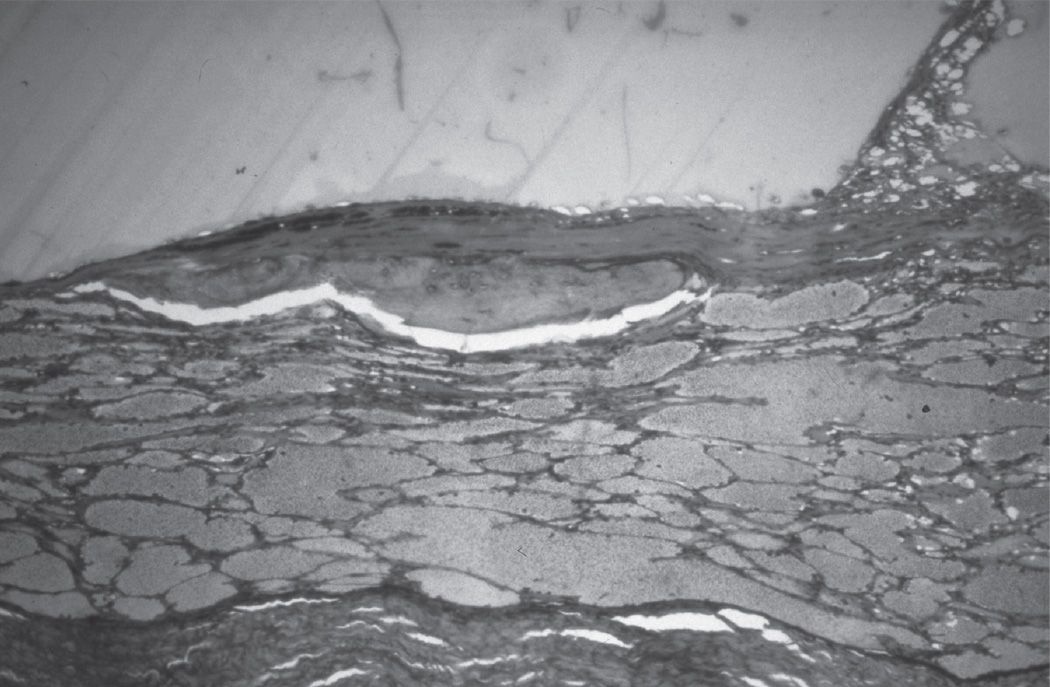
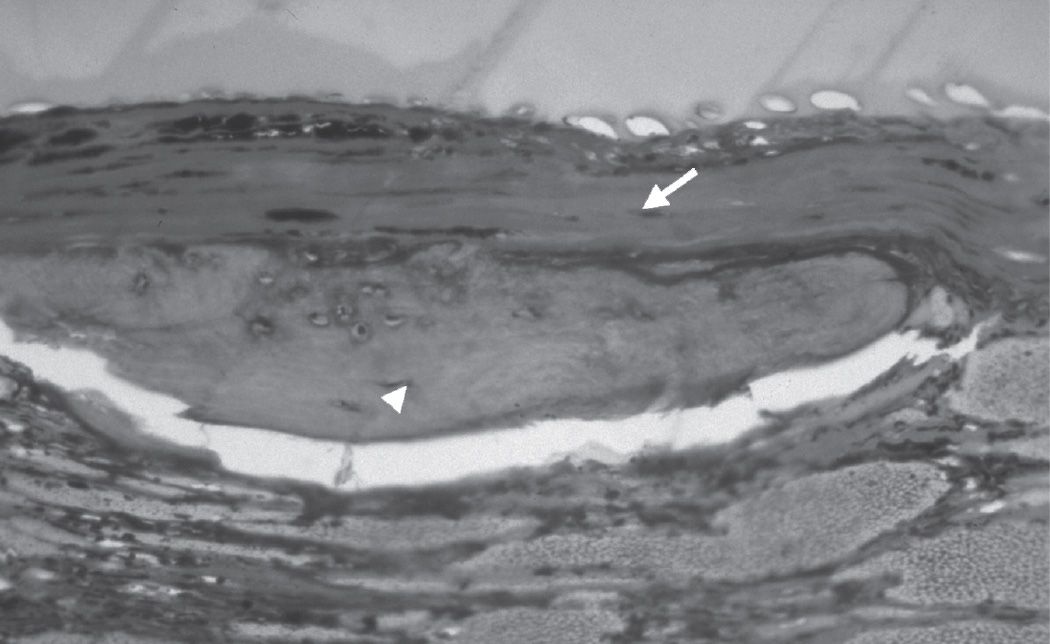
5 The histologic section of the enucleated eye is shown (Fig. 7-7). What type of retinal detachment is present?
A) Rhegmatogenous
B) Tractional
C) Exudative
D) Artifactitious
6 Figures 7-8 and 7-9 show an area of dense fibrous tissue (arrow) overlying an area of calcified tissue (arrowhead) in the plane of the retinal pigment epithelium and Bruch membrane. Which statement is true?
A) These lesions developed from choroidal melanocytes (melanocytes of neural crest origin).
B) The cells of origin for these lesions are the retinal pigment epithelial cells (cells of neuroectodermal origin).
C) These lesions can undergo malignant transformation.
D) The cell of origin of these lesions is unknown.
QUESTIONS 7 and 8 (FIGS. 7-10 and 7-11) A 5-year-old girl has a facial nevus flammeus and seizures. The lesion is similar to the clinical features of the previous patient (Figs. 7-4 to 7-6). Representative histopathology shows a choroidal lesion (Figs. 7-10 and 7-11).
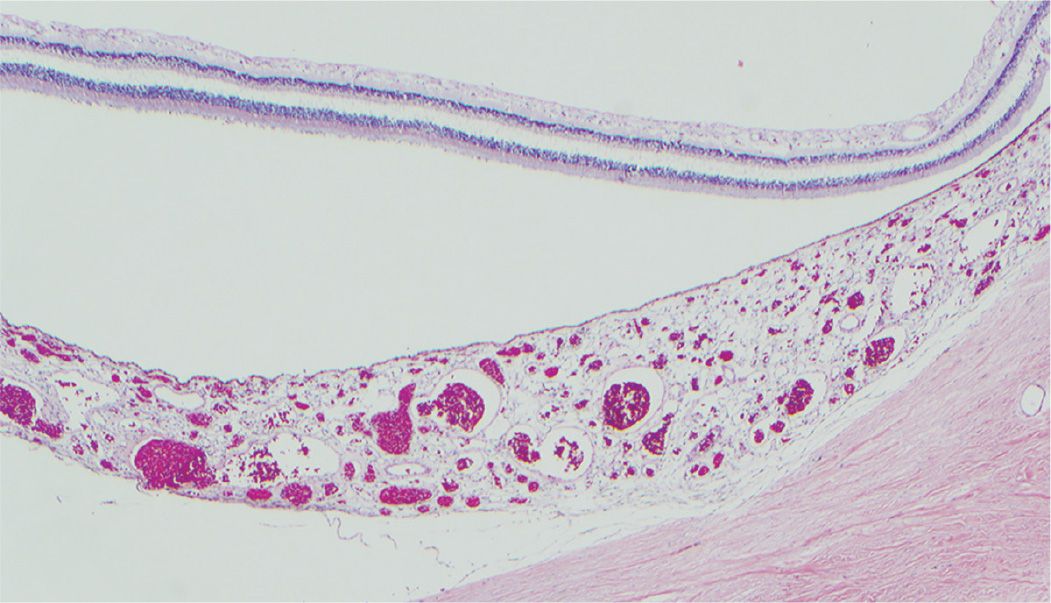
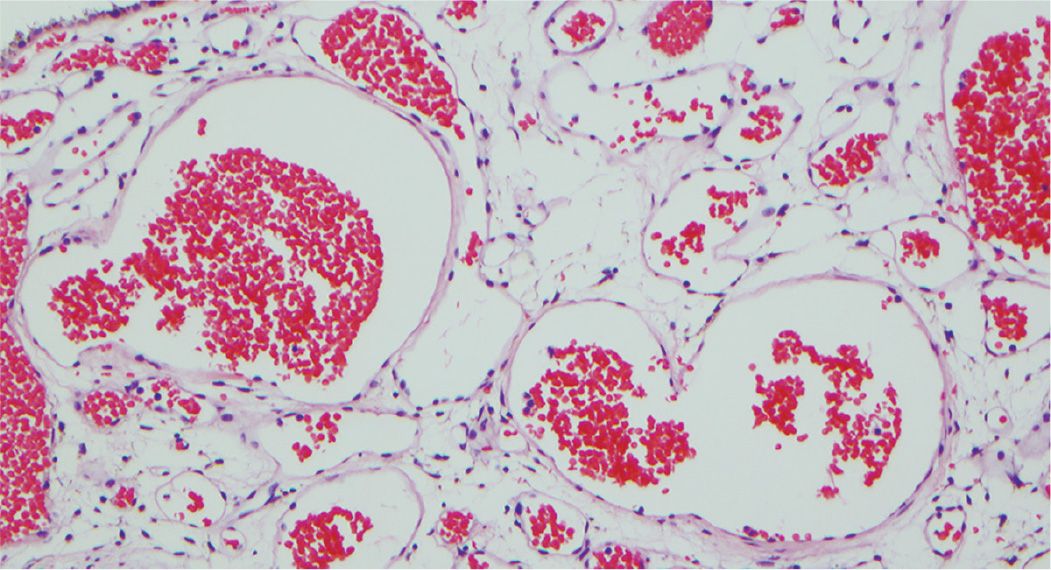
7 Which statement is most likely true regarding the girl’s condition?
A) This is a condition with a high probability of spontaneous regression.
B) Glaucoma is not a common feature of this disease.
C) This disease is inherited in an autosomal recessive manner.
D) Ipsilateral hemangiomas of the meninges are common.
8 Which statement is true regarding the histopathology of the lesion?
A) This is a malignant lesion.
B) Lakes of proteinaceous material are separated by fibrovascular septa.
C) This lesion is consistent with a capillary hemangioma.
D) Cavernous spaces filled with erythrocytes are present.
9 The corneal button of a patient is shown (Fig. 7-12). Appropriate steps in the management of the condition may include all of the following, except:
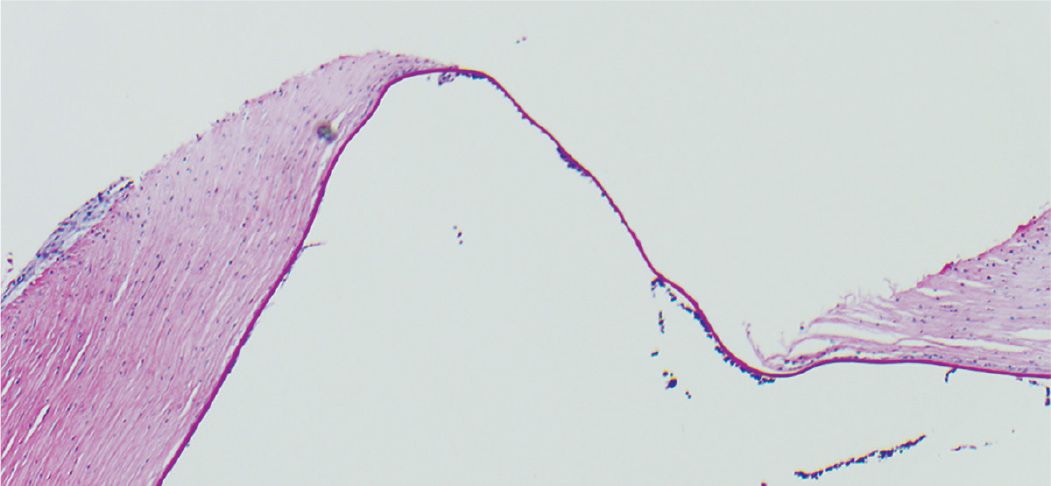
A) cyanoacrylate adhesive
B) bandage contact lens
C) systemic carbonic anhydrase inhibitors
D) descemet stripping automated endothelial keratoplasty
10 You are asked to read out a temporal artery biopsy specimen (Fig. 7-13) from a patient with headache and jaw claudication. Which of the following is the best answer?
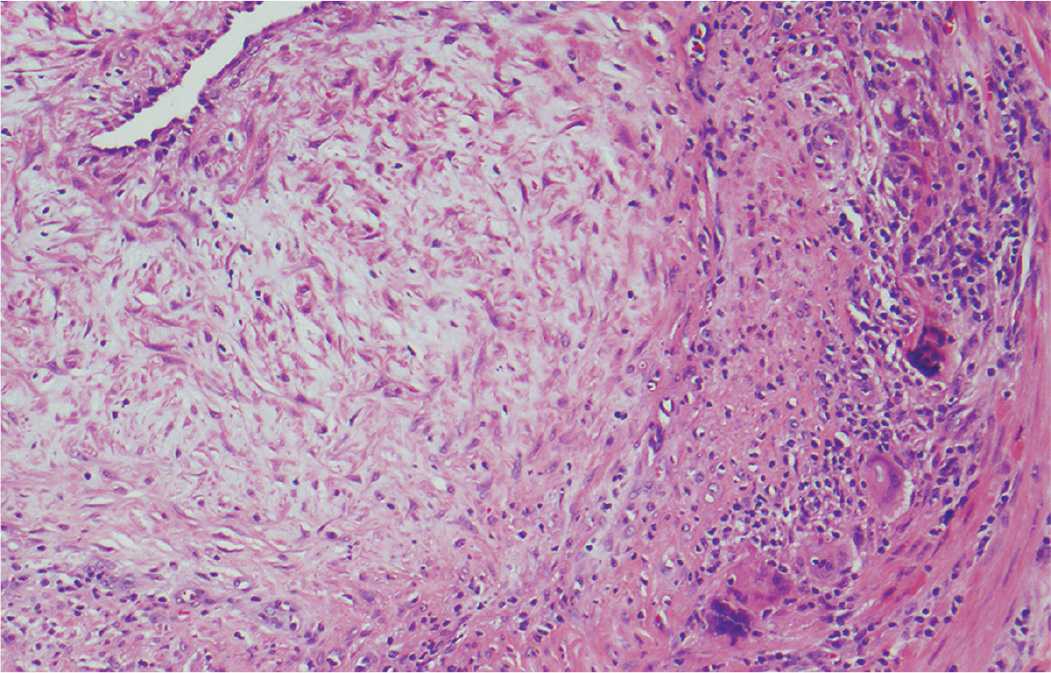
A) The result is suspicious and contralateral biopsy is warranted.
B) The result is negative and steroids may be tapered off.
C) The result is positive and steroids should be continued.
D) The result is inconclusive and blood laboratory studies are needed.
QUESTIONS 11 and 12 (FIG. 7-14) A 72-year-old female had intracapsular cataract extraction 6 months ago. Recently, she developed increased IOP that was unresponsive to topical treatment. Histologic section through the anterior segment and iris is shown in Figure 7-14.
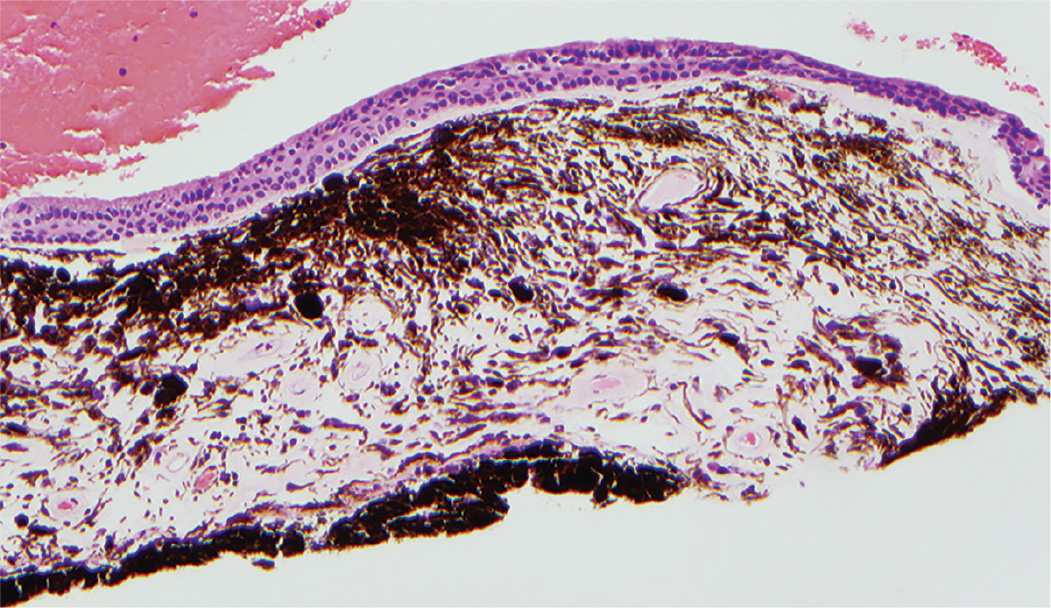
11 Which statement is correct?
A) This condition is a variant of the iridocorneal endothelial (ICE) syndrome.
B) Surface epithelium is found in the anterior chamber.
C) This is a congenital condition that manifests only in adults.
D) This is a self-limited disorder in most cases.
12 Which stain highlights the characteristic features of the epithelium and allows identification of its origin?
A) Hematoxylin–eosin
B) Oil Red O
C) Periodic acid–Schiff (PAS)
D) Congo red
13 Cells distended by round eosinophilic cytoplasmic inclusions are shown in Figure 7-15 (arrow). Normal versions of the same cell type are seen nearby (arrowheads). What is the cell type of the cells shown in Figure 7-15?
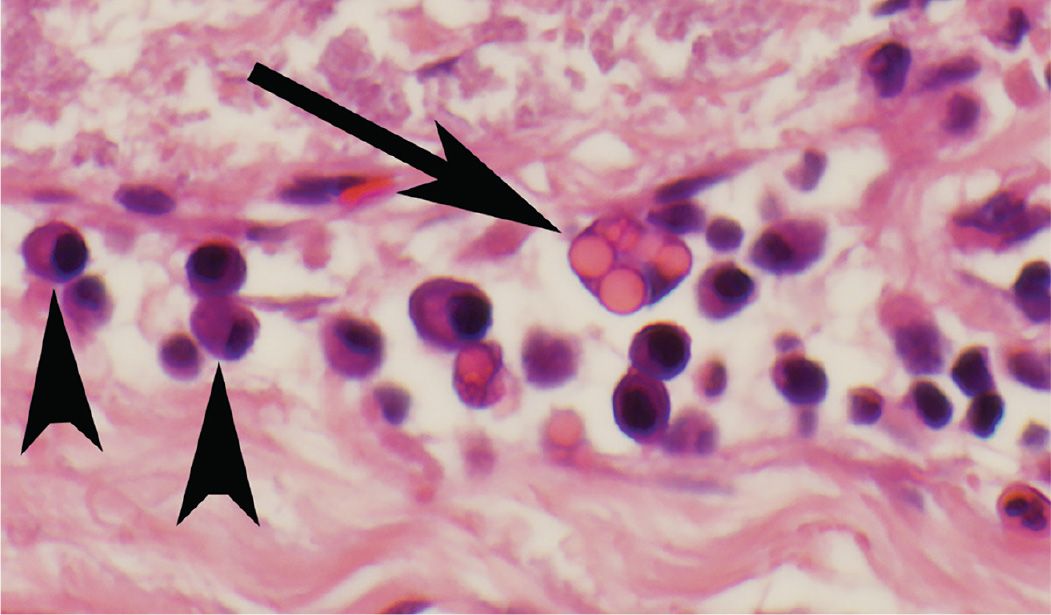
A) Hemosiderin-laden macrophages
B) Cytomegalovirus-infected retinal cells
C) Plasma cells–containing immunoglobulin
D) Polyhedral melanocytes–containing pigment
QUESTIONS 14 and 15 (FIG. 7-16) A 16-year-old adolescent boy presented with a blind, painful eye. Ophthalmologic examination showed band keratopathy, and the anterior chamber and pupil were covered by a pigmented membrane. Ultrasonographic examination showed a microphthalmic eye with an irregular structure behind the lens extending to the optic disc. The eye was enucleated. A vitreous stalk extended from the optic nerve to the lens and tractional membranes extended to the ciliary body processes (Fig. 7-16).
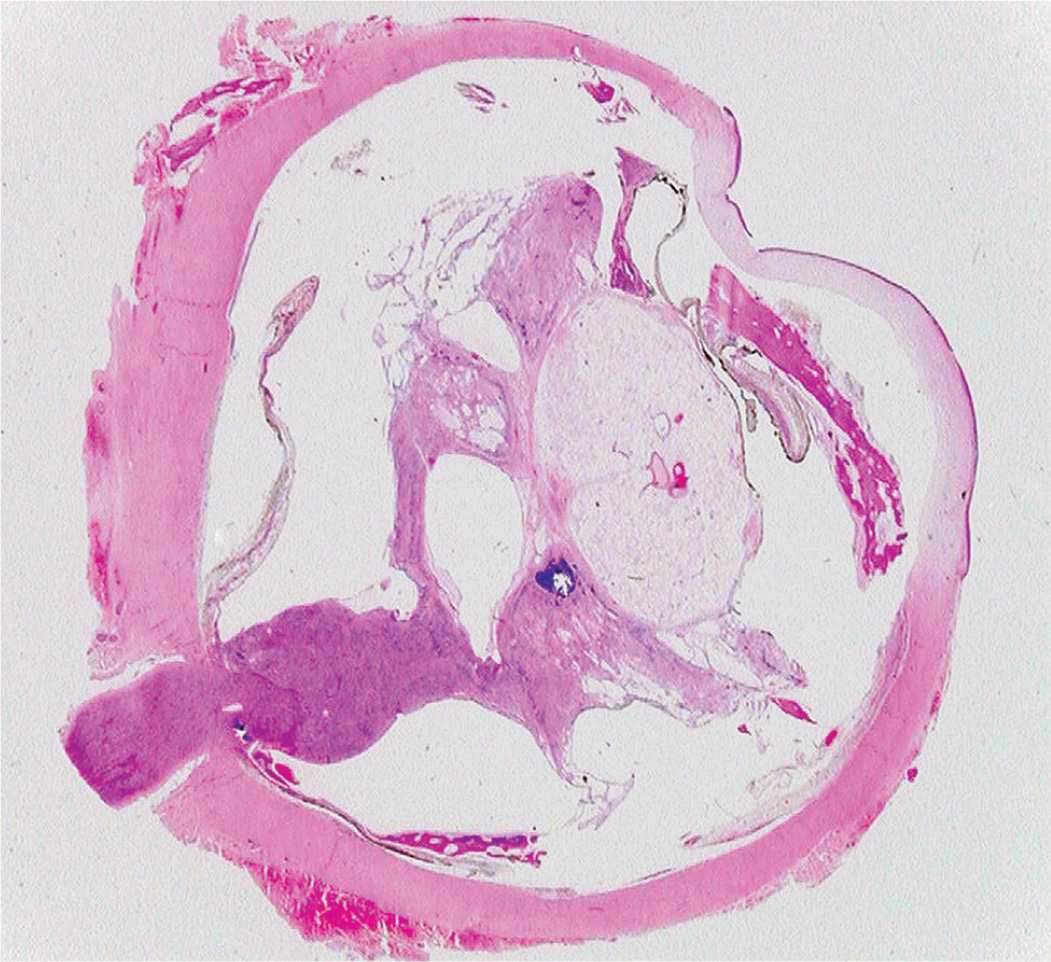
14 Which statement is incorrect?
A) A microphthalmic eye is typical for this disease.
B) This is a unilateral disease.
C) Lipomatosis lentis can be a feature of this condition.
D) The diagnosis is confirmed with CT and serologic studies.
15 What is the etiology of this condition?
A) Developmental abnormality
B) Intraocular infection
C) Trauma
D) Neoplasm
16 A 6-month-old child has an iris lesion and recurrent anterior chamber bleeding. A biopsy of this mass was performed. A high-magnification image of the histology is shown in Figure 7-17. Which statement is correct?
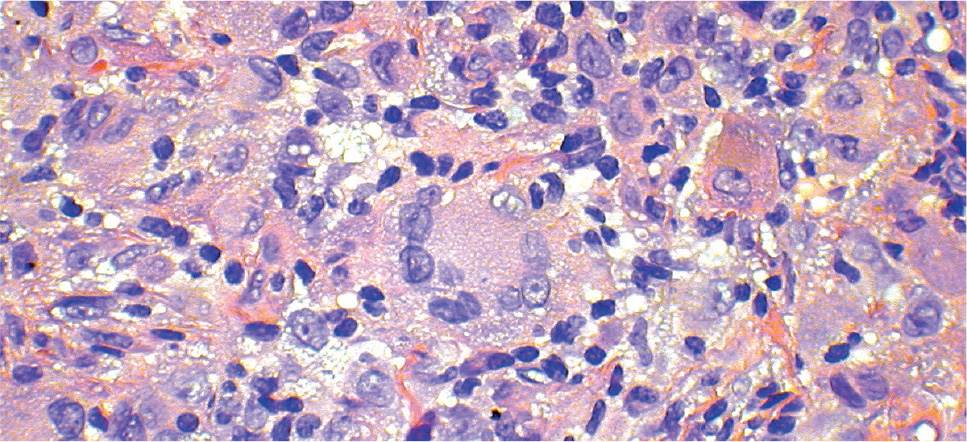
A) The lesion shows pleomorphic cells with a multinucleated tumor cell.
B) This is a benign cutaneous disorder rarely involving the eye.
C) Immunohistochemical stains for macrophages (histiocytes) are negative.
D) Most ocular lesions occur after 1 year of age in this disease entity.
QUESTIONS 17 and 18 (FIGS. 7-18 and 7-19) A 73-year-old woman presents with a lesion in her right eye (Fig. 7-18) that had developed over the course of 2 years. The red, vascular nodule is located in the palpebral conjunctiva in the area of the mucocutaneous junction. Ophthalmologic examination is otherwise normal. Histologic examination is shown in Figure 7-19.
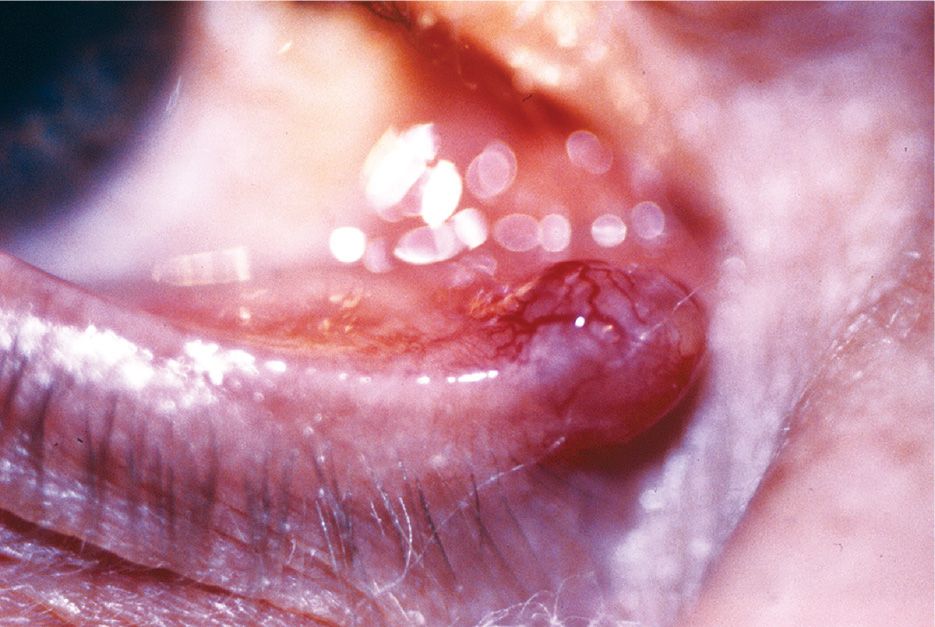

17 What is the disease process?
A) Adenoid cystic carcinoma
B) Oncocytoma
C) Pyogenic granuloma
D) Papilloma
18 The granular appearance of the cytoplasm of the cells in Figure 7-19 is caused by:
A) rough endoplasmic reticulum
B) multiple partially atypical mitochondria
C) smooth endoplasmic reticulum
D) polyribosomes
QUESTIONS 19 and 20 (FIG. 7-20) A 23-year-old man presents with a hard, painless lump within the left lower eyelid for over 6 weeks. Histologic examination is shown in Figure 7-20.
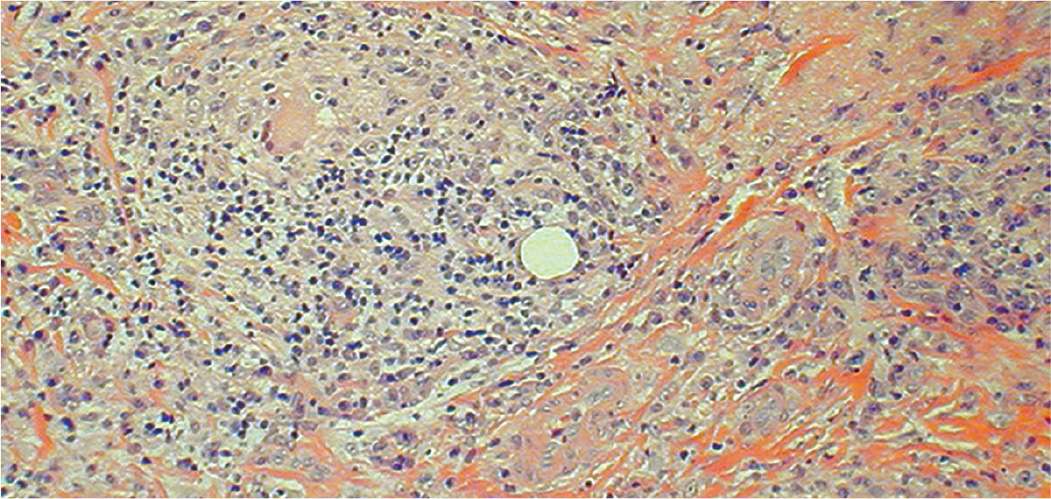
19 Which statement is correct?
A) This can be a chronic inflammation of the Zeis sebaceous glands.
B) Excision with frozen section control of margins is the treatment of choice.
C) Histologic examination is not necessary because it is always a benign lesion.
D) Moll glands can be the etiologic agent for this inflammation.
20 The clear space in the center of Figure 7-20:
A) is a feature of a xanthoma
B) is also visible on a frozen section
C) is consistent with a zonal lipogranuloma
D) is a vascular channel
21 A 35-year-old woman who has a history of recurrent “corneal inflammation” developed a near full-thickness corneal ulcer. Penetrating keratoplasty was performed (Fig. 7-21). Histologic examination shows a granulomatous reaction to Descemet membrane (Fig. 7-22) and the presence of retrocorneal tissue. What is the most likely etiologic agent for the keratitis?

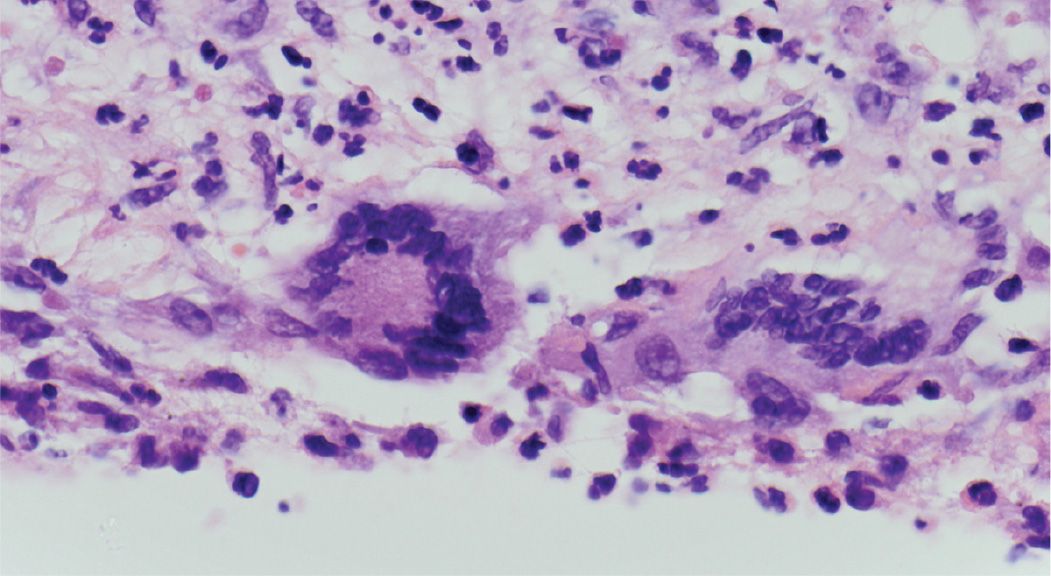
A) Acanthamoeba
B) Herpes virus
C) Pseudomonas
D) Candida albicans
22 A 72-year-old woman has a history of cataract extraction with implantation of an anterior chamber IOL 5 months ago. She reports that the surgeon had “lost some lens material” during surgery. The eye was never “quiet” after surgery. Low- and higher-power photomicrographs around the lens (Figs. 7-23 and 7-24) are shown. Which statement is incorrect?
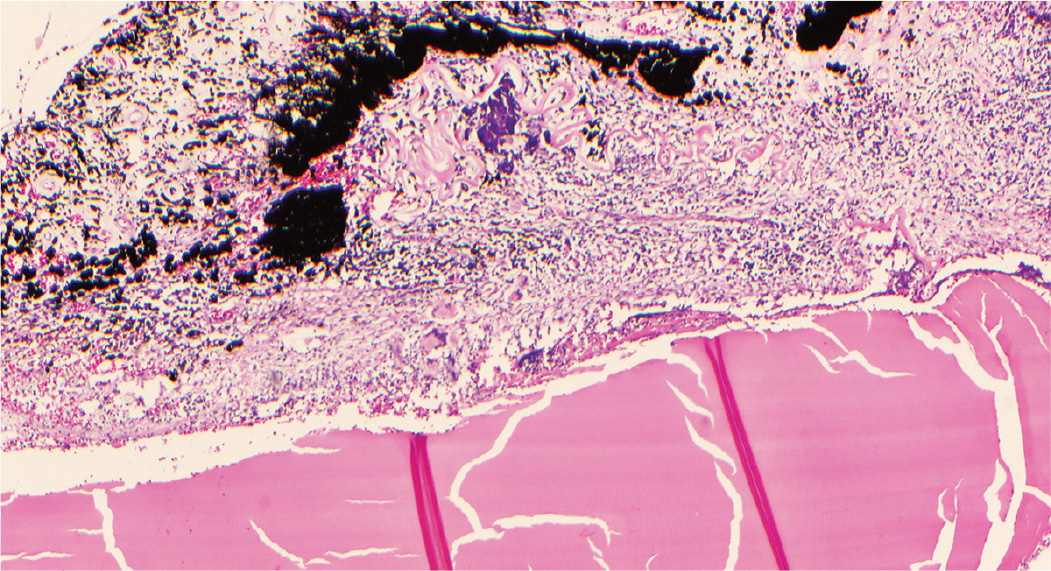
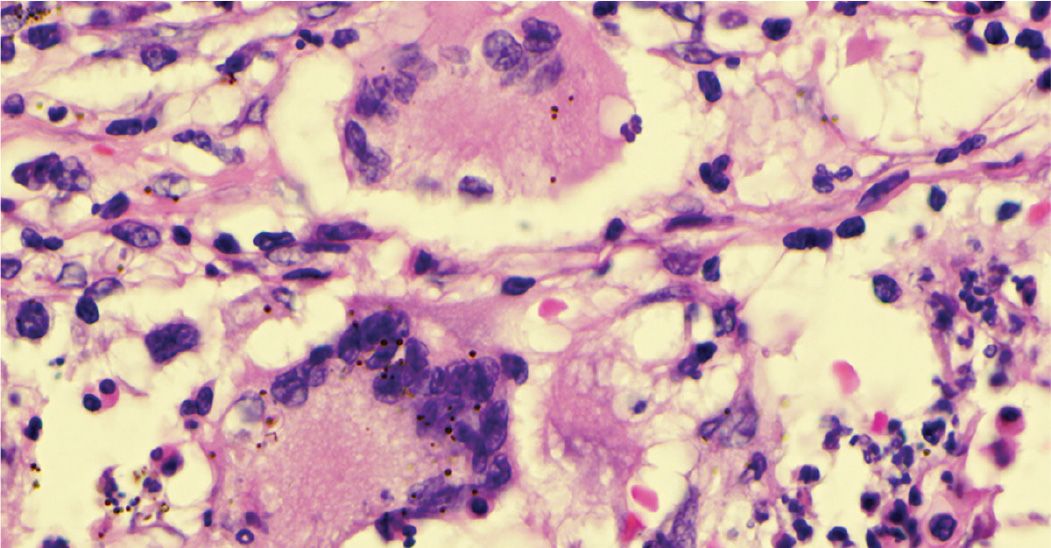
A) The eye has a chronic choroidal detachment.
B) The lens nucleus was lost into the vitreous during cataract surgery.
C) The eye is hypotonous.
D) The disease is phacolytic glaucoma.
23 An 85-year-old patient is seen preoperatively to have a loose scroll of lens capsule in the anterior chamber. The lens capsule is removed during cataract surgery. High-magnification images of the specimen are shown (Figs. 7-25 and 7-26). Normal lens epithelial cells are seen posterior to the surface of the capsule. The filter paper along the bottom of the figure was used to maintain specimen orientation. Which statement is true regarding the lens capsule?
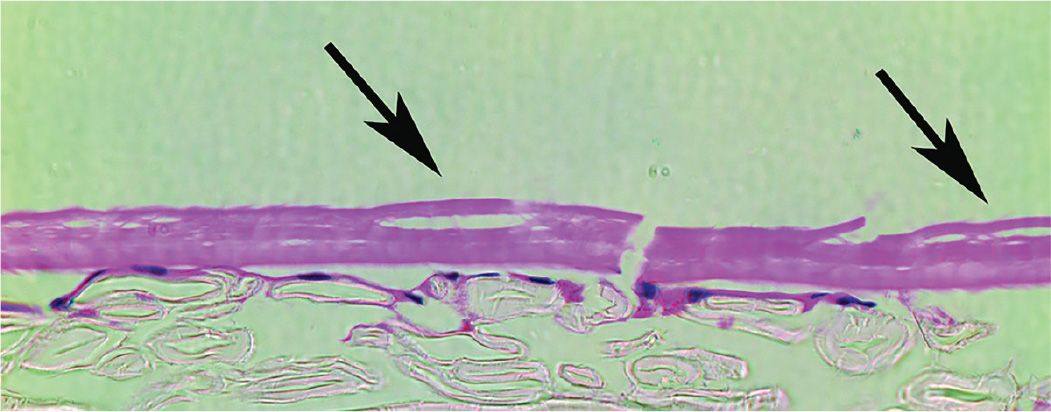

A) This condition can be caused by exposure to infrared radiation.
B) Radial transillumination defects are found in the iris.
C) The incidence of zonular dialysis during cataract surgery is higher in these patients.
D) This condition is much more common in African Americans.
24 What is the abnormal condition in this histologic specimen (Fig. 7-27)?
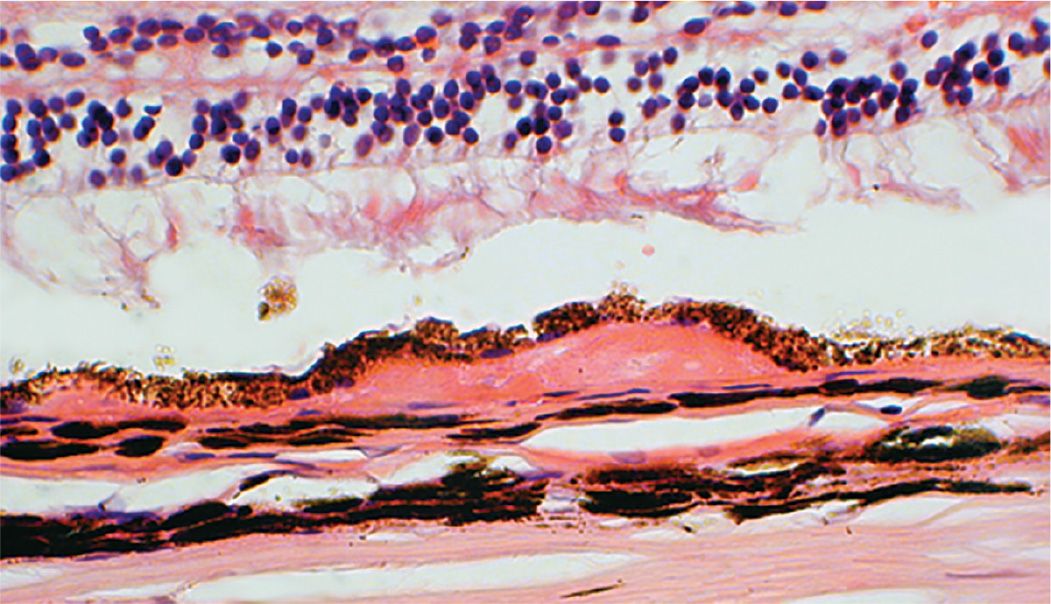
A) Basal laminar deposits
B) Soft drusen
C) Nodular drusen
D) Basal linear deposits
QUESTIONS 25 and 26 (FIG. 7-28)
Stay updated, free articles. Join our Telegram channel

Full access? Get Clinical Tree


